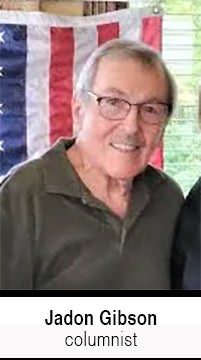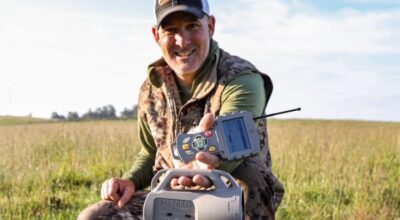War of 1763: Conclusion
Published 2:26 pm Friday, December 15, 2023
|
Getting your Trinity Audio player ready...
|
By Jadon Gibson
Contributing Columnist
English settlers were streaming across the Appalachian Mountains and continuing westward. Chief Pontiac of the Ottawa tribe arose and strongly spoke of the incursion by these new people on the lands where the Indians lived and hunted for generations.
Many outposts were falling one after another and bloodshed was widespread over Pennsylvania and Ohio.
Many of the new groups had settled together living off the land. The Paxton Boys were one such group. They had lost several of their loved ones and were bent on killing all Indians they encountered. They felt the Quaker-dominated government failed to provide them protection from the warring Indian groups. The Paxton Boys was a name given to this group of Scotch-Irish settlers from the area of Paxtang, Pennsylvania.
The hostile Indians were a considerable distance away so the Paxton Boys went on a killing spree against the nearest Indians, many of them Christians. These Conestogas were well liked, living peacefully with the colonists in their settlements. Even the women and children were murdered in an especially brutal fashion as they cut off the hands and feet of the victims. The Paxton Boys burned the cabins where the charred remains of the grisly killings were found. Officials found evidence of the murders while looking through the ashes.
They also found a bag of items including a historic document, the 1701 treaty signed by William Penn, proclaiming that the colonists and Indians “shall forever hereafter be as one head, one heart and one life in true friendship and amity as one people.”
Much of the killing throughout the ‘new world’ was of a retaliatory nature. It was unfortunate that the Paxton Boys obliterated the peaceful Conestogas as a reaction to Pontiac’s rebellion.
Other Indians groups then reacted to the passing of the Conestogas. About 60 Indians called on residents of Muddy Creek and Big Levels, the two settlements of Greenbrier, before the local residents even knew of the uprising. They arrived on Muddy Creek first and appeared friendly before suddenly murdering all of the men of the settlement. The women and children were taken as prisoners.
They left guards with their prisoners and proceeded to call on the settlers in the Big Levels area. Here as before they appeared to call in a spirit of friendship. Earlier in the day, Archibald Glendennin killed three elk and the settlers and Indians had a sumptuous feast. After eating there was a signal that sent the Indians into a killing spree. All the men of the settlement were killed and the women and children taken prisoner as before.
Mrs. Glendennin was terribly upset over the actions of the Indians and the murder of her husband. She berated them over murdering the men after masking the purpose of their visit as one of friendship. One Indian was especially upset over her actions and made several shadow strokes toward her with his tomahawk even though she was holding her baby. He put his weapon aside but she continued to verbally attack the Indians.
After marching several hours the following day, Mrs. Glendennin began lagging behind and looked for a chance to escape. When she felt she had an excellent opportunity, she allowed another woman to carry her infant. She thought they would both fare better apart. While passing through an area of heavy bushes she stepped aside into the thicket. Her deception was unnoticed as the Indians continued their march with their prisoners.
After awhile the infant began crying and it prompted the Indians to ask about the boy’s mother.
“I’ll go after the cow and bring her back to her calf,” one of the warriors said after determining that Glendennin had escaped. The escapee was not found and the Indian proceeded to kill the infant by dashing it against a tree.
After escaping, Glendennin sped along the trail as she intended to put as much distance as possible between herself and those who killed her husband and the other men. She arrived home late the following day and covered her husband’s body with fence rails.
Mrs. Glendennin was in a terrible condition by this time as she hadn’t eaten or slept but very little over the preceding two days and nights. She had trekked over 20 miles through the wilds and suffered the loss of her home, family and many friends. That plus having to deal with her husband’s corpse left her delusional.
That night she lay quietly in a cornfield and dozed in and out of sleep. She would later say that she was startled awake once that night by an Indian, knife in hand, as he passed nearby. It was generally felt by others that her mind became overactive under all of the pressures and this was likely a part of one of her dreams.
Settlers from a distant village arrived several days later to help with the difficult task of burying the dead. They took Glendennin’s widow to their village where she was able to subsist by doing odd jobs for several of the families.
Jadon Gibson is a freelance writer from Harrogate, Tennessee. Thanks to Lincoln Memorial University, Alice Lloyd College and the Museum of Appalachia for their assistance.
After eating there was a signal that sent the Indians into a killing spree. All the men of the settlement were killed and the women and children taken prisoner as before.






